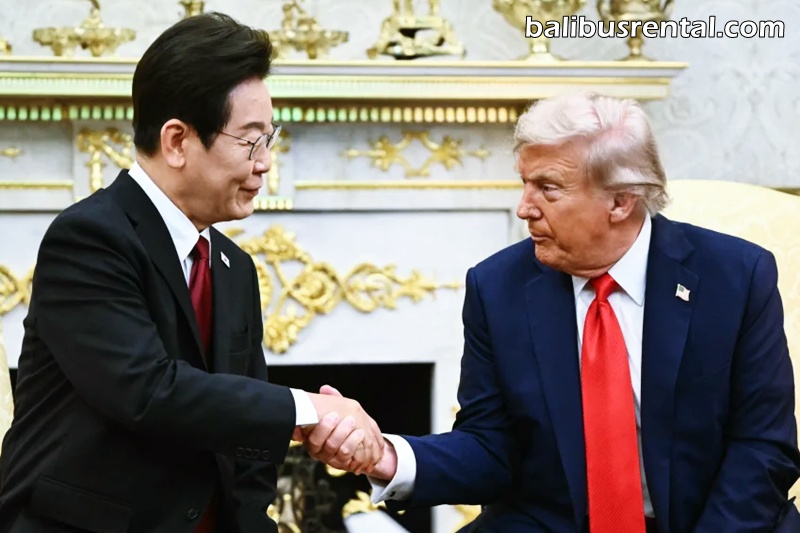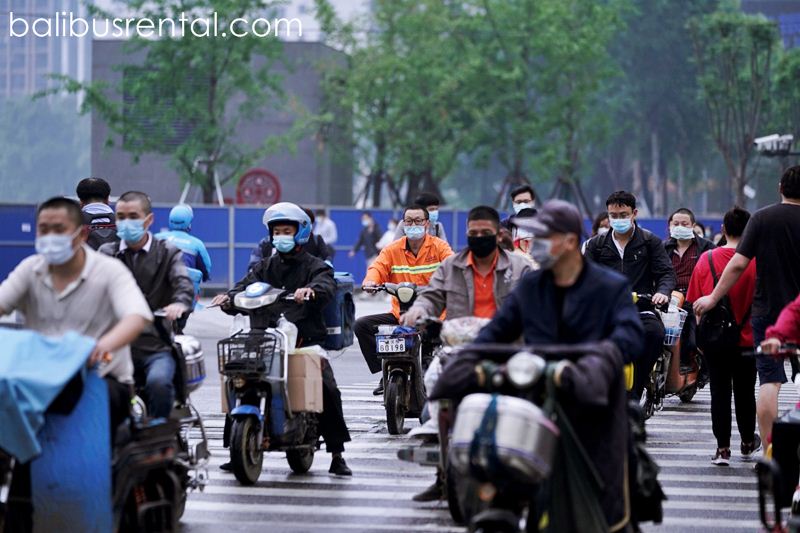Thursday | 23rd October 2025
Seoul, South Korea — South Korean President Lee Jae Myung has reaffirmed his country’s strong alliance with the United States, praising U.S. President Donald Trump as a potential “peacemaker” for the Korean Peninsula and brushing aside recent trade and immigration tensions between the two allies.
In a wide-ranging interview with CNN on Wednesday, Lee struck an optimistic tone just days before Trump’s scheduled visit to Asia, emphasizing diplomacy and dialogue even as North Korea heightened regional anxieties by test-firing ballistic missiles — its first such provocation since Lee took office in June.
“Tensions have certainly worsened in recent years,” Lee admitted, referring to Pyongyang’s accelerating weapons tests and increasingly confrontational rhetoric. “But we must never abandon the path of peace and dialogue. I believe peace on the Korean Peninsula is still achievable.”
Lee said he sees Trump playing a crucial role in that effort. “I hope that President Trump and Chairman Kim Jong Un can once again sit down and engage in dialogue,” he said. “I also believe President Trump truly wants to achieve world peace, and that is why I have encouraged him to take on the role of a peacemaker.”
Although a meeting between Trump and Kim during the upcoming Asia tour is considered unlikely, Lee said such an encounter would send a powerful message. “If the leaders of the United States and North Korea could suddenly meet, it would be a good thing — for both Koreas and for the world,” he said.
Trump and Kim previously met several times during Trump’s first term, holding high-profile summits in Singapore, Hanoi, and briefly at the DMZ, though the talks failed to deliver a lasting denuclearization deal. Still, in a White House meeting earlier this year, Trump told Lee he was open to meeting Kim again “under the right conditions.”
Trump’s Asia trip will also include a meeting with Chinese President Xi Jinping during the Asia-Pacific Economic Cooperation (APEC) summit next week in Gyeongju, South Korea, where regional leaders will gather to discuss trade, security, and innovation. Trump confirmed last Friday that he intends to meet Xi “on the sidelines” of the summit, though the exact timing remains uncertain. The two nations have recently been locked in another round of trade disputes and tariff threats, adding strain to already fraught U.S.-China relations.
For South Korea, navigating the competing pressures of Washington and Beijing has always required a delicate balance. “We have different ideologies and systems of government,” Lee said, “but we cannot and should not shut out China.” He acknowledged that while the U.S.-South Korea alliance remains “vital,” Seoul must manage its relationship with China with “care and pragmatism.”
South Korea and the United States have been close allies for more than 70 years, sharing deep military, economic, and cultural ties. The U.S. maintains its largest overseas military base in South Korea, hosting more than 41,000 troops and family members. Yet, China remains South Korea’s biggest trading partner, underscoring the complex interdependence that shapes Seoul’s foreign policy.
“When it comes to international relations, you cannot divide countries neatly into friends and non-friends,” Lee reflected. “It’s far more complex than that. Cooperation must coexist with competition.”
Lee also addressed South Korea’s economic challenges, particularly in maintaining its edge in semiconductors, electric vehicles, and high-tech manufacturing — sectors where Chinese companies have grown rapidly. While conceding that Chinese rivals are catching up, Lee expressed confidence in South Korea’s continued competitiveness. “There are still many areas where Korean companies can win,” he said, citing innovation and quality as key advantages.
The president underscored his commitment to economic and technological cooperation with the United States, positioning the alliance as a mutually beneficial partnership. “In the past, South Korea received a great deal of help from the United States,” Lee said. “Now we are willing to assist in America’s efforts to rebuild its manufacturing base — to the extent possible.”
Lee’s conciliatory tone contrasted with recent friction in the relationship. The U.S. government’s immigration crackdown last month — which saw nearly 500 workers, mostly South Koreans, arrested during an ICE raid at a Hyundai plant in Georgia — provoked outrage in Seoul. The detainees were later deported, prompting Trump to clarify online that his administration did not wish to “frighten off or discourage investment” by foreign companies.
Trade tensions have also simmered. In July, just weeks into his presidency, Lee negotiated a temporary deal with the Trump administration to delay steep tariffs on Korean exports. The deal involved a $350 billion investment pledge by South Korean firms in U.S. industries, including electric vehicles, batteries, and microchips. However, negotiations over a permanent trade framework have dragged on, leaving key sectors like South Korea’s auto industry vulnerable to 25% U.S. tariffs — higher than those imposed on Japan or the European Union.
Lee conceded there were still “differences in opinion” between Seoul and Washington on trade, but expressed faith that both sides would ultimately reach a “rational and fair conclusion.” He also brushed off criticism that Trump’s tariff strategy was overly aggressive toward allies. “I believe we will, in the end, be able to reach an acceptable and reasonable result,” he said, smiling.
As the APEC summit approaches, Lee’s comments reflect his broader vision: maintaining strong ties with both Washington and Beijing while promoting peace, stability, and economic cooperation across Asia. For now, his message to the world — and to Trump — is clear: South Korea stands ready to build bridges, not walls.




